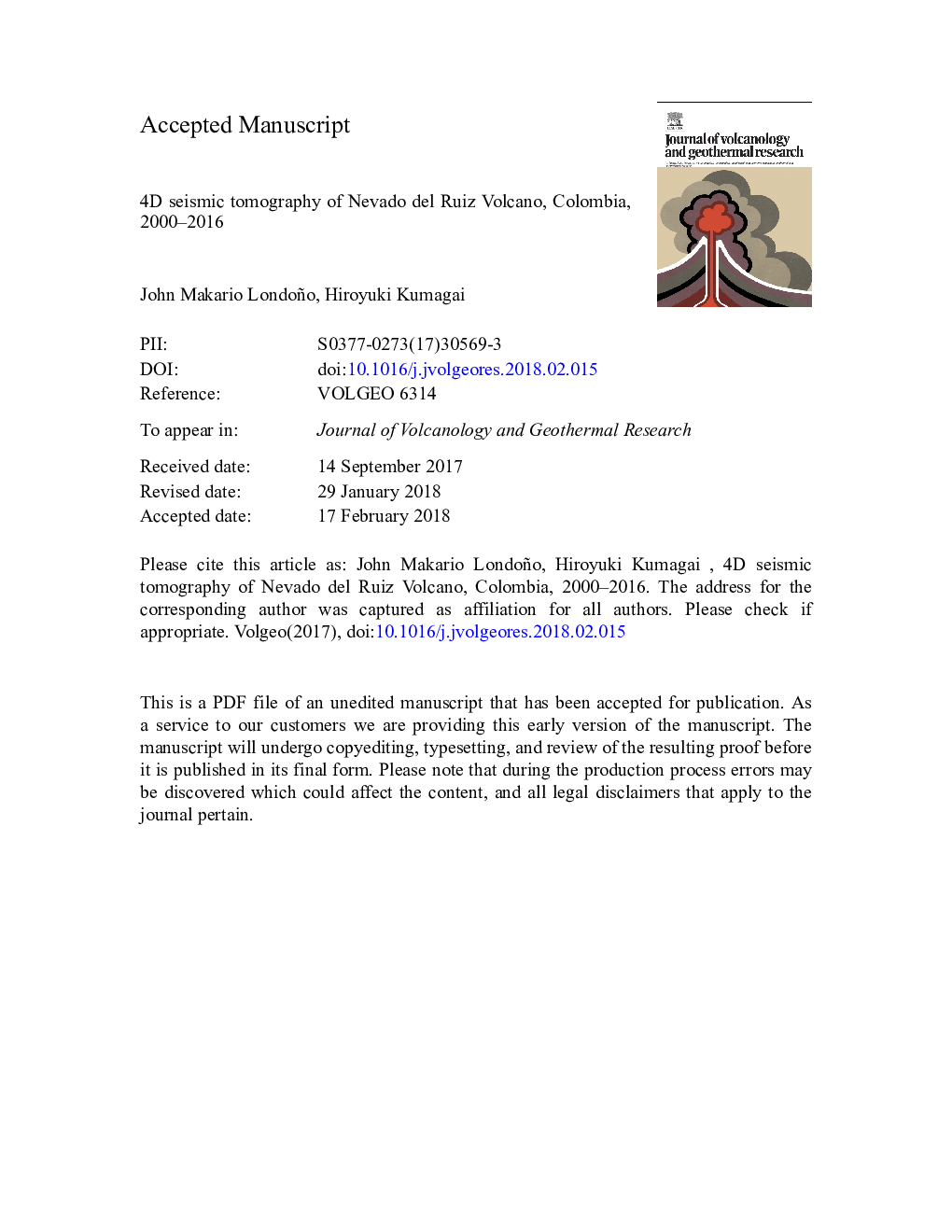| Article ID | Journal | Published Year | Pages | File Type |
|---|---|---|---|---|
| 8911253 | Journal of Volcanology and Geothermal Research | 2018 | 41 Pages |
Abstract
To track and analyze temporal changes in the volcanic system of Nevado del Ruiz, Colombia, repeated three-dimensional seismic tomography (4D seismic tomography) for P and S wave velocities (Vp and Vs, respectively) during the period 2000-2016 was performed. P and S wave arrival time data were classified on the basis of changes in volcanic activity into five time periods: 2000-2006, 2007-2009, 2010-2012, 2013-2014, and 2015-2016. Our results showed clear changes in 2013-2014 and 2015-2016, periods of heightened volcanic activity after an episode of unrest in 2010. Regions of low Vp, low Vs, and high Vp/Vs (>1.9) were found beneath and northwest of the active crater at depths of 2-3â¯km below sea level. The enhancement of those anomalies suggests that a new pulse of magma arrived in the volcanic system at that time. Regions with low Vp/Vs values (1.3-1.6) in the upper part of the volcano, at depths from â3 to â2â¯km, are interpreted as the result of vapor accumulation within highly fractured zones of the hydrothermal system. The ratios of fractional change of Vp and Vs in 2015-2016 suggest that partial melting zones were located beneath the active crater at depths of â2 to 0â¯km. Our results show that the volcanic system of Nevado del Ruiz has experienced changes associated with the input of new magma, which ascended and interacted with preexisting magma bodies and led to the recent emplacement of a small dome at the bottom of the active crater. We combined our results and evidence from previous studies to propose a model of the Nevado del Ruiz plumbing system from 1985 to 2016.
Related Topics
Physical Sciences and Engineering
Earth and Planetary Sciences
Geochemistry and Petrology
Authors
John Makario Londoño, Hiroyuki Kumagai,
